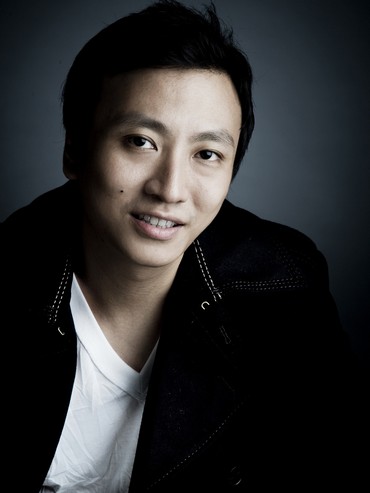
Atsu Sekhose tells Abhishek Mande that being talented is just one tiny prerequisite of achieving success in the fashion business. The young fashion designer spells out his success mantras.
It's difficult to miss Atsu Sekhose. The 32-year-old fashion designer whose work has been making heads turn in the circles that matter, comes from Nagaland. His distinct northeast Indian looks make him stand out in the crowd, as do his classic cuts and trendy designs.
Sekhose attributes much of his design sense to his roots -- in Nagaland. He says that practically everyone there is very trendy and creative and it helped to have a fashionable mother who loved Vogue, back in the day when most of Mumbai hadn't even heard of the magazine, and sisters who liked dressing up.
So when Atsu Sekhose walked up to his parents one fine day and told them of his dream of becoming a fashion designer, no one objected. If at all, they encouraged him to take it up. This despite some serious apprehension from some of their friends and well-wishers.
The dashing young designer graduated, completed his course in fashion designing at the haloed National Institute of Fashion Technology in Delhi and started assisting couture master Tarun Tahiliani.
In 2007, he branched out on his own and started the eponymous label -- Atsu.
The brand does not have its own outlet yet but through the various stores in Mumbai, Delhi, Chennai and Bangalore many young women pick up its trendy pret designs.
Atsu Sekhose tells us how he took the road less travelled and where he plans to go from here.
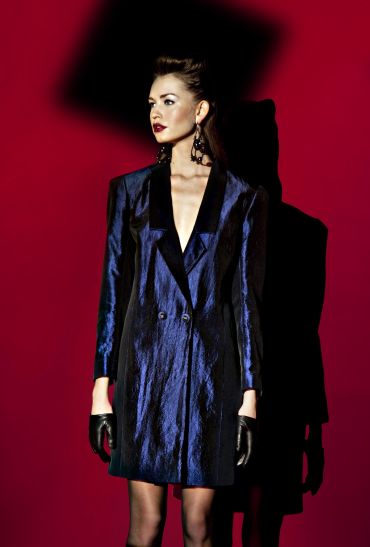
Your home is in Nagaland. How has the culture around you influenced your designs?
Back in the North-East, everyone is very, very trendy. We like to wear good clothes and we like to look good. To add to that my mother was quite a fashionable woman. I grew up in surroundings where everyone was creative -- people in the North-East love music and everybody plays a guitar or knows how to sing and likes dressing up like rock stars.
So right from the beginning, I knew I would be getting into some sort of a creative field. I liked to draw and sketch a lot. In a way, fashion designing was a natural path to take.
Why is it that despite being so trendy, not many Indians from the North-East end up as fashion designers?
That's because they don't see this as a serious profession. When I decided to take it up, a lot of people advised me to drop the idea. They were worried that I might not be able to make it.
In spite of having a very open culture and being such a fashionable community, fashion designing is not considered to be a very lucrative profession there.
What about your family? Did they have apprehensions too?
No. On the contrary, both my parents were very supportive. I was encouraged to follow my dreams and take up a profession I thought was best for me.
Did you ever consider doing anything else?
I graduated in commerce so an MBA was the most logical step. But I don't think I would have been as happy as I am today. The idea behind doing commerce was simply to have some sort of a back-up option had fashion designing not worked out. Even my parents insisted that I complete my graduation before doing anything in fashion.
And then you got into NIFT...
Yes. After I did my graduation I joined NIFT in Delhi. That was in 1998.
What was that shift like, from a small town to a big, bad city?
It was interesting. Initially I took some time to adjust, but within a matter of months I was neck-deep in work and hardly had any time to miss home.

I am told Delhi can be quite cruel to people from the North-East. Did you face any racial discrimination?
Not really. People do turn around and give you a second glance because you look different from the rest. But other than that I didn't really face anything else.
Also I was on the NIFT campus, which is a melting pot of cultures. People from all over the country from various backgrounds come here to study. So I don't think I got any different treatment there either.
Besides maybe adjusting to the food or the different people around me, for the first few months, I don't think I faced any difficulty coming to terms with my surroundings.
What was the NIFT experience like? How did those years shape you into the designer you are?
The most important thing that NIFT taught us was that the fashion industry is not just glamour. There is a lot of hard work that goes behind the scenes.
A lot of your success has to do with how good your business skills are and how patient you can be.
Talent is just one of the prerequisites in the industry. Besides being talented, you also have to have personality and an image that can make you a saleable name.
NIFT also helped us to remain grounded. One of the lessons we learnt from there was that you cannot just graduate and start your label. It is important to intern with someone, learn the tricks of the trade, remain focused on your work and then maybe in a few years' time branch out on your own.
You did the same, didn't you? After graduating, you joined Tarun Tahiliani. How did that come about and what was it like working with him?
I had participated in a show at the fashion school where he saw my work. He offered me a job right away. So I had an offer in hand even before I graduated from NIFT.
The biggest asset of having worked with Tarun Tahiliani was that he allowed me to be myself and gave me the opportunity to discover my sensibilities. I've seen a lot of young designers who tend to get so influenced by the designer they work for that they lose their uniqueness.
Because of the way Tarun functioned, I never lost my sense of identity even though I had to adapt to his style.
While I was there, I handled his pret line. We travelled a lot and I got a lot of client contacts during that time. So it was a great learning experience.
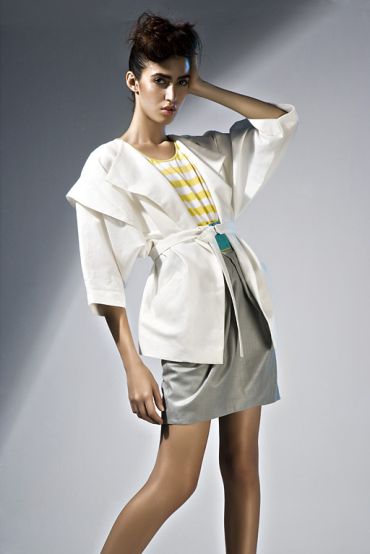
Which Indian designers have inspired you?
I quite like Manish Arora for thinking so completely out of the box and sticking to what he does best, without bothering so much about what the media has to write about his work. He has stuck to being true to himself and that has really worked in his favour. So despite being very different from my sensibilities, I quite like Manish Arora's work.
Then there is Rajesh Pratap Singh, the quiet designer who lets his work do all the talking. I like his minimalist approach and the refined craftsmanship and impeccable finishing of his clothes. I also like the fact that he is a person who doesn't go around promoting himself and instead focuses on bringing out stunning designs.
And of course there is Tarun Tahiliani whose craftsmanship I really like. It is amazing how he manages to fuse the modern and the ethnic so well.
What about international designers? Who are your favourites?
I appreciate the work of Alber Elbaz, Dries Van Noten and Stella McCartney primarily because my design sensibility is quite like theirs. Like them, I design wearable clothes for real people and also feel that my aesthetic is similar to theirs.
When you design a line, what do you keep in mind?
Wearability is the key. When I design something I want the woman who wears it to feel good and hope that it makes her look and feel more beautiful
My last collection was an inspiration from the men's classic tailoring style. I had transformed it into a feminine women's wear line that was wearable as well as classic and trendy at the same time.
The aim has always been to create something that doesn't get outdated and boring.
How would you describe your design style?
Chic, understated, modern and wearable.
What kind of music inspires you?
I usually like Western classical and Sufi music. For my recent fall collection, I used a kind of classical violin fused with strains of modern music.
What colours are 'in' for the coming fall-winter season?
Fall-winter usually sees a lot of dark and warm colours coming out. This season though, camel is a big colour.
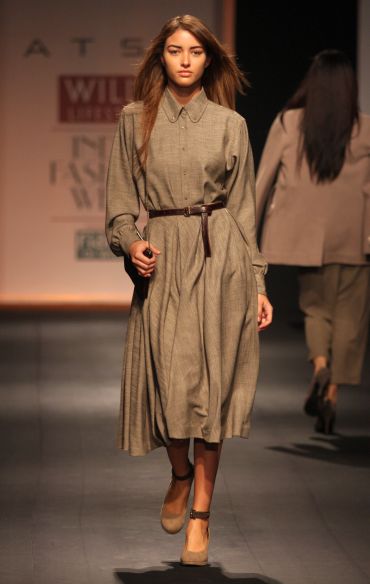
What according to you are must-haves in a girl's closet?
A basic pair of black dresses, well-fitting denims, a white shirt, a classic black bag and a pair of black and gold shoes -- gold because it goes with a lot of colours and is ideal for evening wear.
The biggest fashion blunders one must avoid?
Who do you think are the most stylish celebrities?
I find Sonam Kapoor very fashionable. With her, it isn't just about wearing pretty clothes but knowing which clothes look good on her and what silhouettes she can carry off.
Then there is Lara Dutta, who I think has a great sense of style.
Models Sapna Kumar and Bhavna Sharma also have a strong identity of their own -- they don't follow trends blindly and have a quirky sense of styling.
And finally there is Priya Kishore who runs Bombay Electric (the fashion store) who I think is the most stylish woman. Her style is unique, quirky, chic and modern.
Do you see yourself designing for movies?
Movies usually have typical styling and fashion demands. However, I've noticed that a lot of new films movies offer great scope for designers so I am quite open to the idea of doing films.
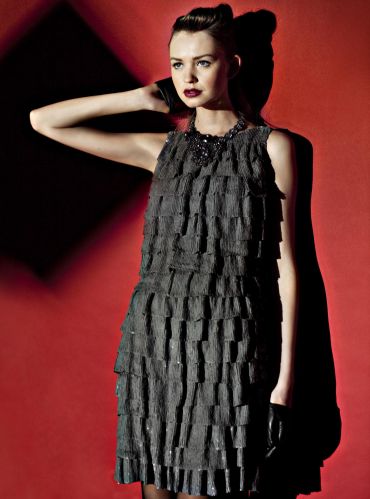
Some of your pret contemporaries like Masaba Gupta are slowly inching towards creating bridal wear. Do you see yourself doing that?
I have been doing Western bridal wear. But I don't think I will design Indian bridal wear anytime soon. It takes a lot of workmanship and time.
What were the challenges you faced in the early years of setting up your brand?
To be honest, the only challenge I faced in my initial years is that I had to do everything myself -- working on my labels, managing my business, handling the accounts and most of all, designing good clothes. That can be somewhat difficult.
Thankfully, my designs were well-received. Stylists noticed me, fashion magazine editors liked my clothes and things began rolling. I was lucky that I got noticed so quickly.
Having been in the industry for almost a decade now, what would you say your learnings have been?
First, you need to focus on your work -- there is no alternative to that. Second, you must be true to yourself. Third, you cannot be influenced by everything and anything that surrounds you -- you need to be able to filter out the unnecessary. And finally, you need to be ready to work hard and be extremely patient because sometimes it takes a lot of time for things to work out.
Your tips for budding designers
Finally, how do you plan to take your brand, Atsu to the next level?
Having made a mark in the Indian market, I hope to take Atsu overseas. I am planning to hire agents abroad who will hopefully get work. Once that happens, it will be a really big step for the company.
Atsu Sekhose retails from Melange in Mumbai, Ensemble in Mumbai and Delhi, Evoluzione in Chennai and Collage in Bangalore.